Other Sabres Preview Articles:
This is the second piece in a series of articles that will evaluate players competing for spots on the Buffalo Sabres opening night lineup. Each article will focus on a particular position. Disclaimer: A Jack Eichel trade could entirely blow up this analysis at any moment.
How head coach Don Granato will shake out the order of players on the wing will depend heavily on how capable those competing for centre positions are at filling a role down the middle. If there are dropouts and letdowns, some of the players on this right winger list could end up playing centre either to begin the season or further down the road.
Just like at centre, seven players are competing for the four spots on the roster. Among those are five skaters that really stand out: Arttu Ruotsalainen, Victor Olofsson, Tage Thompson, Vinnie Hinostroza, and Kyle Okposo. Each of these players is noteworthy in the discussion of right wingers for their own reasons. Before we begin, keep in mind, Arttu Ruotsalainen played center in Finland last year in Ilves Tampere, and the Sabres’ coaching staff might give him an audition there in training camp. Hinostroza has been known to play the position too, so he will also get a shot.
Jockeying for Position
Things will be crowded at the top. Several players will be vying for spots behind Olofsson on the top line. All players mentioned below could get auditions on the second line or, conversely, be demoted down through the lineup as the season progresses. Injuries or underperformance could see some of the players below move to the center as well.
Victor Olofsson
The top line right wing position is the easiest to predict for the Sabres coming out of training camp, and the obvious selection here is Olofsson. Any of the right wingers following in this feature might find themselves up and down the lineup at different times of the season, but he should be a lock on the first line. Avoiding the sophomore slump after an impressive rookie season in 2019-20, the steady Swede scored 13 goals and 32 points in 56 games last year, including 15 goals on the power play. Scouts often credit him for his natural scoring ability, and over the course of an 82-game season, he will be expected to produce at least 20 goals. He is capable of more in the right circumstances.
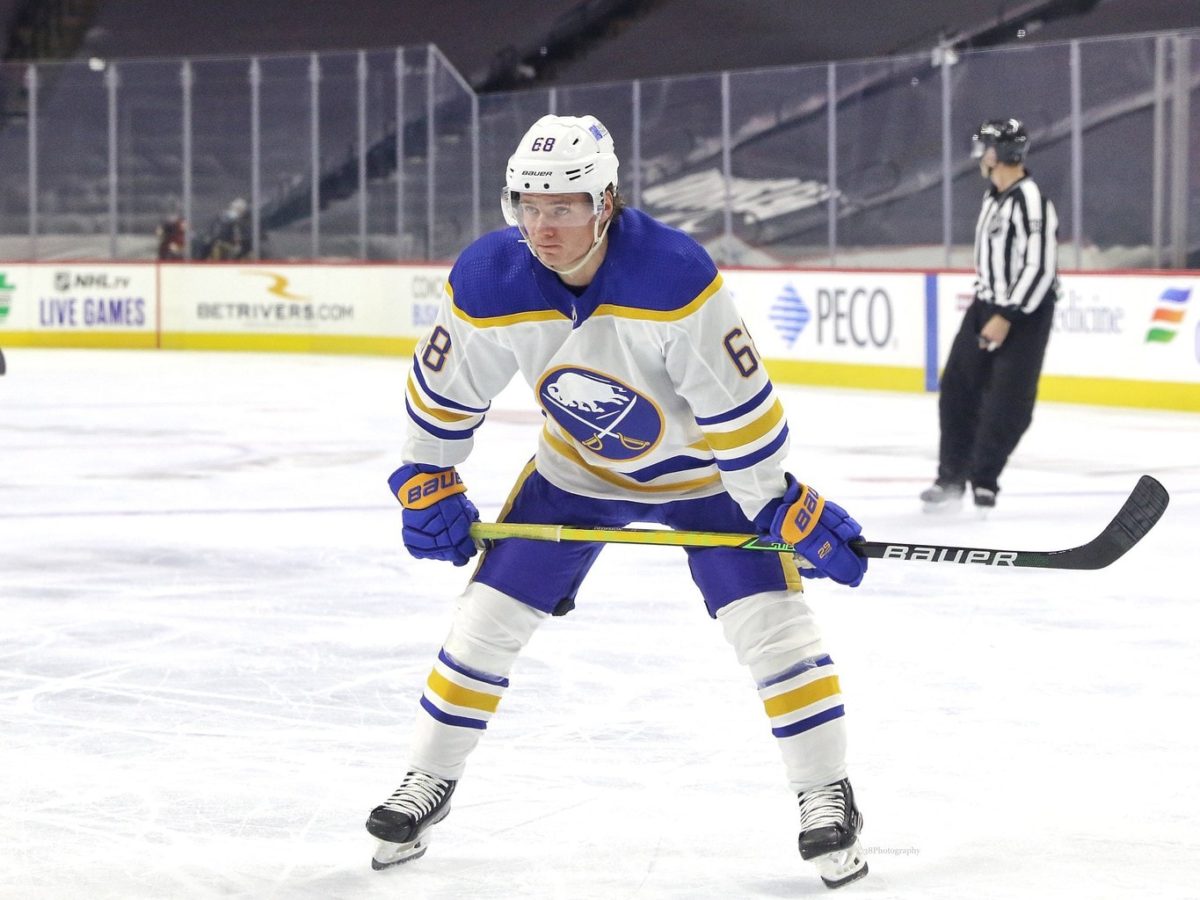
Olafsson will play this year with the number 71, making it the third time the winger has switched around his number. He wore 41 for his first six games to end the 2018-19 season and has sported number 68 for the past two years. He is the fourth Sabre to wear number 71. In the past, it has been worn by Jochen Hecht (2002), Derek Whitmore (2012) and Evan Rodrigues (2016-2020).
Olofsson’s production was relatively consistent throughout last year. Through the first 28 games, he collected eight goals and 19 points. In the second half, he had 13 points, including five goals. Through the coaching change and all of the injuries, he was consistent. In his rookie season, his play was much the same. He broke the 20-goal mark in that campaign, and he’ll be expected to do it again over a full schedule on a weak team in 2021-22. He is in the final year of a contract he signed in October 2020 that earns $3.05 million a year. He could be due for a pay bump, as the Sabres will look to rely on him a little bit more this season. Look for him to improve his even-strength game to earn a bigger paycheck.
Vinnie Hinostroza
The former member of the Fighting Irish in Notre Dame — and a native of Chicago, Hinostroza is looking to bounce his name back up the ranks of effective NHL secondary scoring wingers. He signed a one-year contract with the Sabres on July 28 worth $1.05 million. In a COVID-19-shortened 56-game season last year, Hinostroza only played 26 games split between the Florida Panthers and the Chicago Blackhawks, mustering only 12 points.
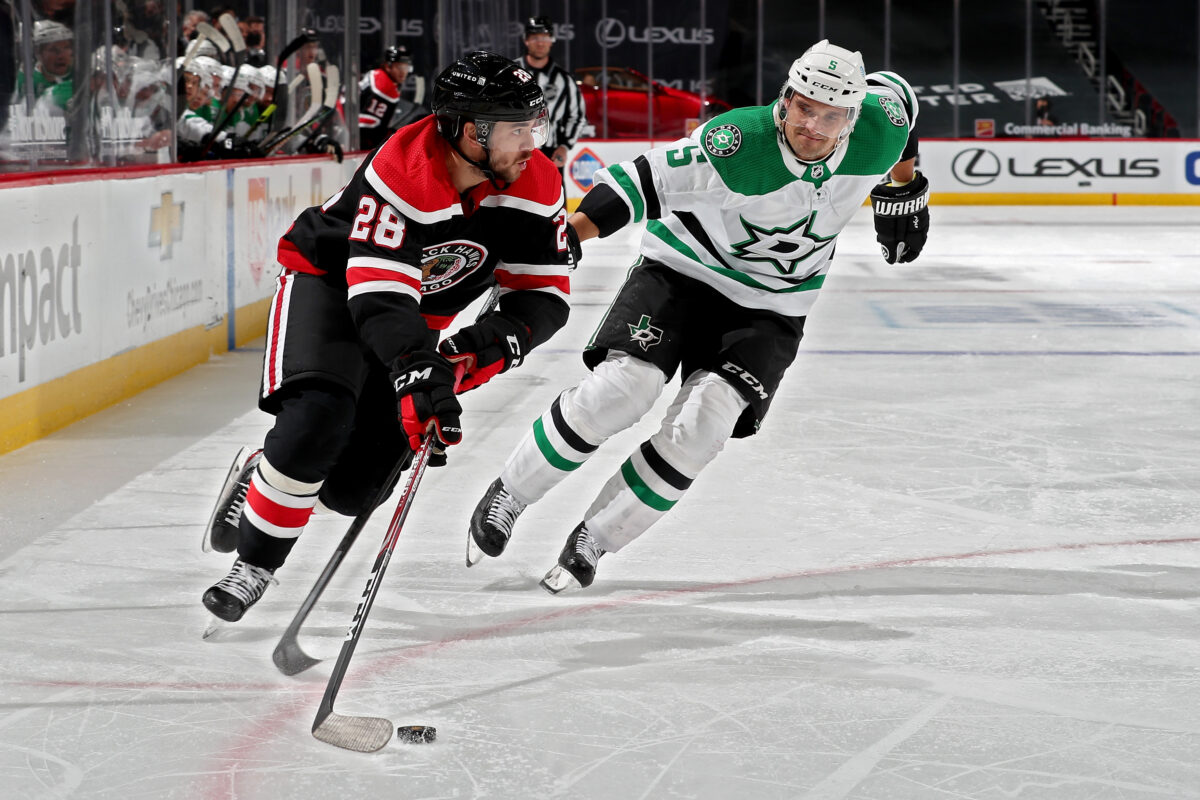
His highest point totals came in 2018-19 when he notched 16 goals and 39 points in 72 games with the Arizona Coyotes. A year later, he regressed to only five goals and 22 points in 68 contests and was not given a qualifying offer by the team as a restricted free agent. The Panthers picked him up on a one-year deal with $1 million to start last season. He played bottom-six minutes with the cats in nine games, putting up zero points.
He missed large swaths of time last season after being traded to the Blackhawks at the deadline because of his need to fulfill a quarantine period, but when he did suit up in Chicago for the second time (he began his career there in 2015), he jumped right into top-six minutes. In his first game on April 6, he produced an assist, three hits and two shots on goal.
In the next 16 games to finish off the year with the Blackhawks, Hinostroza produced at a rate not seen before. He had four goals and 12 points in 17 games, which is good for .70 points per game. If he can keep that pace going to start training camp, he could find himself on the wing for the Sabres second-line or perhaps making a shift to the center. Either way, on a weak Sabres team, he figures to play a more prominent role this upcoming season than he has in the recent past.
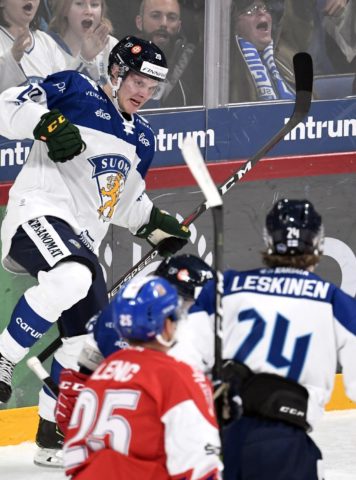
Arttu Ruotsalainen
The man most likely to prevent Hinostroza from playing top-six minutes this year with the Sabres is Ruotsalainen. If the Finnish playmaker with a heck of a shot does take his spot, Hinostroza will be bumped down to third-line minutes, but it’s unlikely he’ll fall further than that unless the Eichel trade brings in a talented winger.
Because of the January start to the last NHL season, Ruotsalainen, a native of Oulu, Finland, started the year in his home country playing in the Finnish Elite League for Ilves Tampere. He tore it up, scoring 16 goals and 27 points in 19 games. When he left for North America, he began playing in the American Hockey League (AHL) with the Rochester Americans.
There, he proved he was NHL ready, showcasing his deadly shot, most notably on the power play. In 13 games with the Amerks, he registered five goals and 13 points on his way to the big show. After the Eric Staal trade to the Montreal Canadiens, a spot opened up in the top six, and Granato thrust him in to see what he was made of.
Ruotslainen didn’t look out of place, which was good because he wasn’t sheltered much. Probably because he didn’t need it – he’s smaller, coming in at 5-foot-9 and weighing only 185 pounds, but his elite vision and foot speed set him apart from the crowd. In 17 games with the Sabres last year, he scored five goals — good enough for a 24-goal pace when prorated over an 82-game season.
Tage Thompson
Thompson will try and crack the top-six out of training camp. The 6-foot-7, 219-pound winger needs to do more than be big, though. Thompson returned in a limited role last year after missing nearly all of the 2019-20 season due to a shoulder injury. He played in 38 games and put up nine goals and 17 points, averaging 13:52 of ice time, mostly on the third and fourth lines. Over the last four games last year, he managed to put up his first and second multi-point games of his career.
Many pundits project him to play a second-line role, but Granato may find him to be more effective in a checking role if his scoring is lacking. Scouts have been projecting him to be a big, power-forward scoring winger since 2017 when he broke into the league with the St. Louis Blues, but that has failed to materialize. Under Granato to end the season, however, Thompson looked like a different player bringing a tenacity and pugnaciousness to his game that has not been seen since his days with the University of Connecticut.
Kyle Okposo
The days where we could expect Okposo to put up 60+ points are well behind us. In fact, since joining the Sabres in 2016, he’s seen his point totals steadily decline from 45 to 44, 29,19 and 13 last season. Where he can be of use is as a veteran presence on a very young team. He’s not particularly great or particularly bad when it comes to defending. The Sabres did suffer -0.13 expected goals over 60 minutes when he was on the ice last year. On the offensive side, the team fared better when he played, although not by much, posting 0.01 expected goals for over 60 with him on the ice.
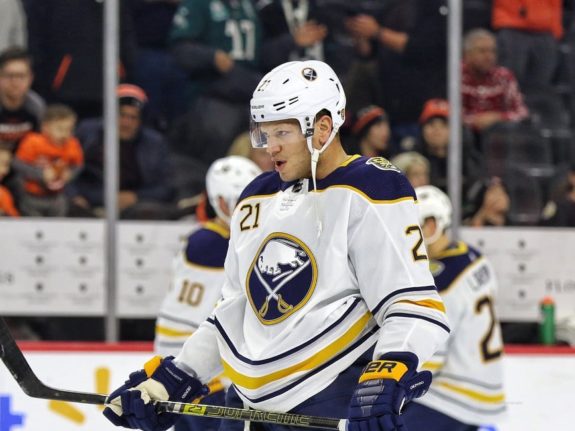
Given the dwindling point totals, the alternate captain’s $6 million average annual value weighs heavy like an anchor, especially if he doesn’t even crack the lineup. There will be plenty of competition at training camp on the right side, and his veteran status might not be enough to keep him out of the press box. Can he turn it around and be a leader for those coming up quickly behind him to take his job? A welcomed scenario for general manager Kevyn Adams would be Okposo playing well enough to garner enough interest to move him out of town at the trade deadline, with the Sabres retaining a portion of his salary. Another bad or injury-riddled season might make him a candidate for a buyout. He has this season and next remaining on his contract.
He’s been through a lot, including battles with concussions and the resulting depression that he had to endure. He is a quality person, and it’s hard to be hard on a guy like that for his play, but, this is a results-oriented business after all.
The Leftovers
With only four spots on the big squad and a few big names on hand to fill places as an injury contingency, probably only one of these players will see any playing time with the team depending on how the Sabres do the individuals play.
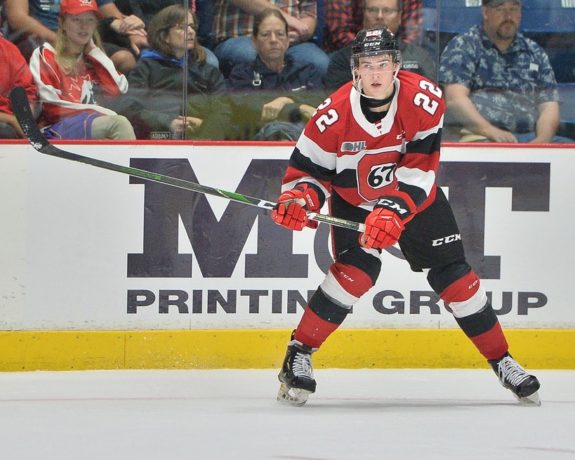
Jack Quinn had surgery for a hernia this offseason which he has fully recovered from. He will be ready to go for training camp and, of those destined for the minor leagues, if anyone can surprise enough to make the roster out of camp, he’d be the one. But is it worth it if he can’t play top-six minutes? Or would he be better served with a full year in Rochester, where he can play a more significant role with more ice time to hone his skills against men? Last year with the Americans, he posted two goals and nine points in 15 games.
Drake Caggiula filled in on the fourth line for Okposo last season after he broke his cheekbone due to a slapshot from teammate Matt Irwin. The waiver-wire darling is an NHL fill-in and a backstop for injuries. If he doesn’t break out and surprise everyone in training camp, that’s likely where he’ll end up this upcoming season.
Final Thoughts
While some will push for Quinn to crack the lineup, he’s probably best served with another year in the minors to season. I say bring him up next year with Owen Power and make it the year of the kids. Caggiula will serve as a nice injury backstop and a motivator for guys like Okposo and Thompson, who could use a push to get them into that next gear. There isn’t a scenario where I don’t see Olofsson on the top line coming out of camp. The most intriguing battle will be the one between Ruotsalainen, Hinostroza and Thompson for second-line supremacy.
Overall, the Sabres 2021-22 roster doesn’t project to do well in a tough Atlantic Division. More than anything, this will be a growth year for the team and management; this provides a chance to evaluate further what they have. There are definite improvements to be made at all positions, and Adams is shaping up to have another busy season in the GM’s chair.